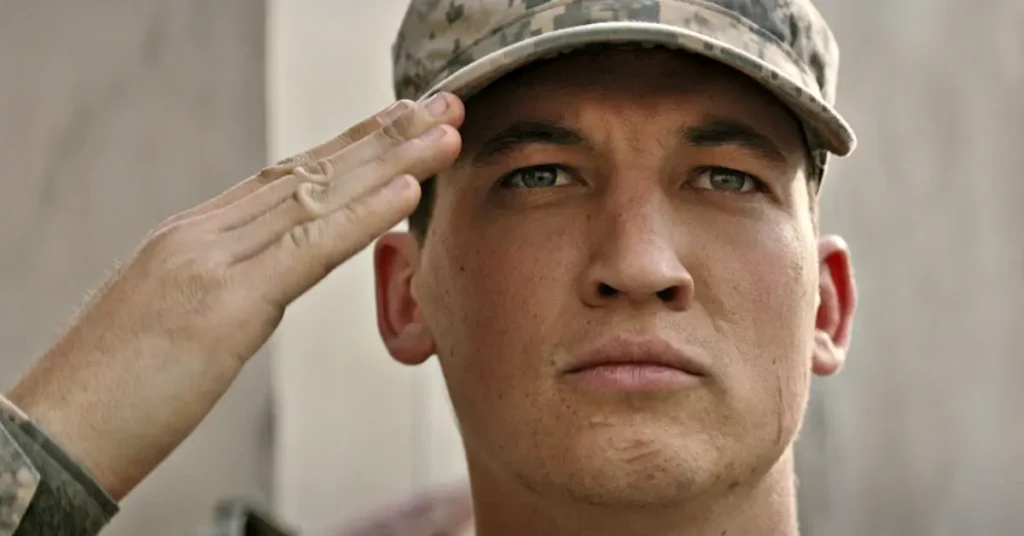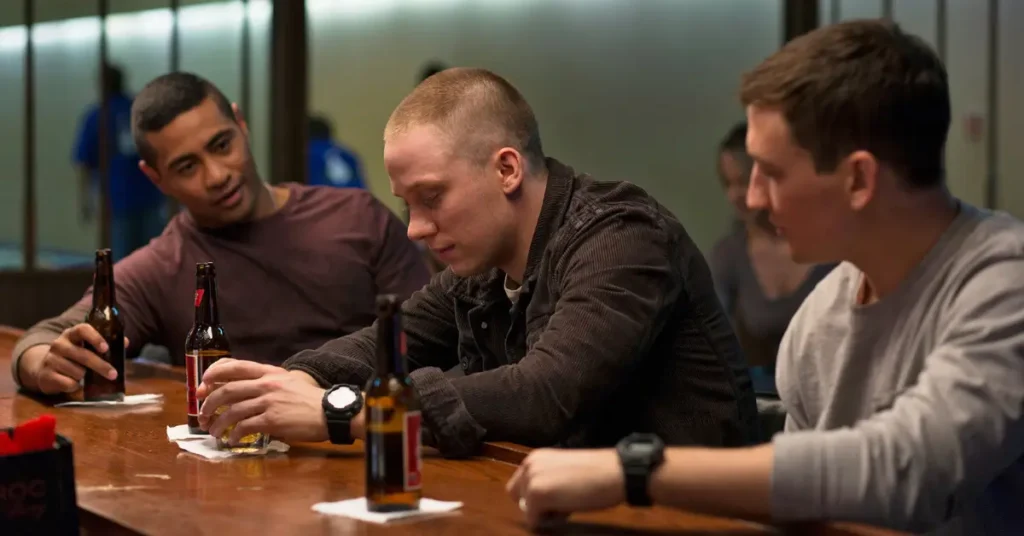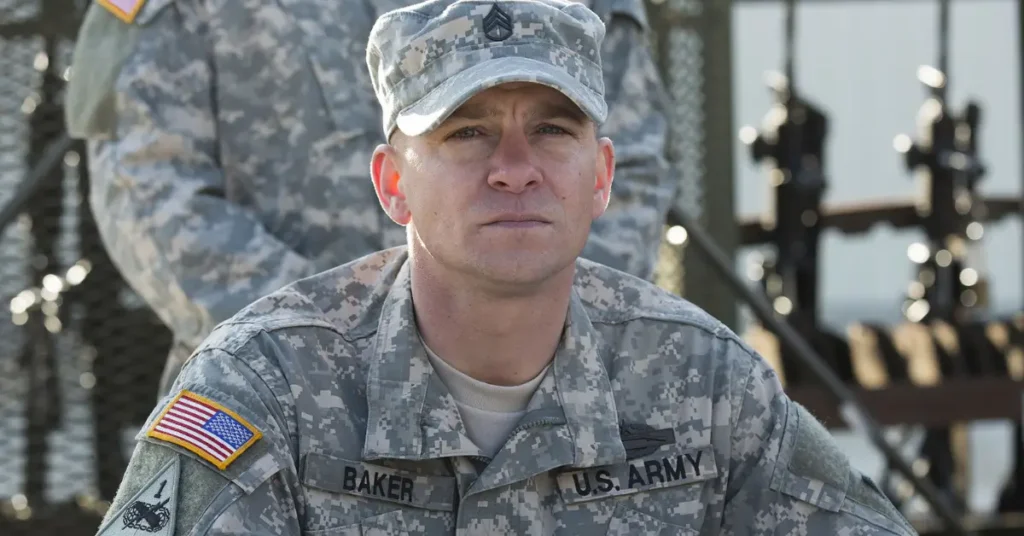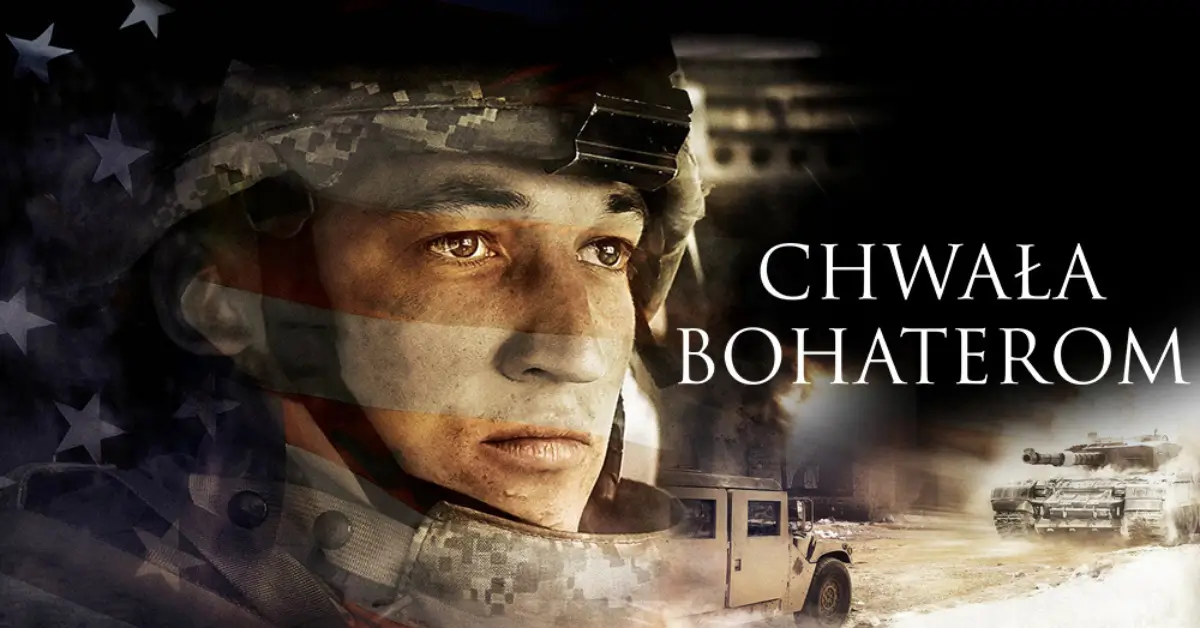Thank You for Your Service: Exploring PTSD Through the Lens of Returning Veterans
When it comes to depicting the invisible wounds of war, few films handle the subject with as much authenticity and compassion as “Thank You for Your Service.” This powerful drama doesn’t just thank veterans with its title it forces us to witness their struggles after returning home, particularly the devastating impact of Post-Traumatic Stress Disorder (PTSD). This film serves as a crucial conversation starter about veteran mental health, showing that for many soldiers, the most challenging battles begin after leaving the battlefield.
Thank you for reading this post, don't forget to subscribe!Basic Film Information
Title: Thank You for Your Service
Release Date & Production Year: October 27, 2017
Director: Jason Hall (making his directorial debut after writing the screenplay for “American Sniper”)
Screenwriter: Jason Hall (adapted from David Finkel’s non-fiction book of the same name)
Main Cast & Characters:
- Miles Teller as Adam Schumann, a sergeant struggling with PTSD and traumatic memories
- Haley Bennett as Saskia Schumann, Adam’s wife fighting to help her husband heal
- Beulah Koale as Solo Aeiti, a soldier with traumatic brain injury and PTSD
- Joe Cole as Billy Waller, whose return home takes a tragic turn
- Amy Schumer in a dramatic role as Amanda Doster, a widow seeking answers
Genre: Biographical war drama
Awards: While not heavily awarded, the film received critical praise for its performances and honest portrayal of veteran experiences
Runtime & Rating: 108 minutes, R (for strong violent content, language throughout, some sexuality, drug material and brief nudity)
Plot Summary

General Overview
“Thank You for Your Service” follows a group of U.S. soldiers returning from Iraq who struggle to reintegrate into civilian life. Unlike many war films that focus on combat heroics, this movie examines the challenging aftermath when soldiers come home carrying invisible psychological wounds.
Mental Health Themes
The film primarily explores PTSD, depression, suicidal ideation, traumatic brain injury, and the bureaucratic obstacles veterans face when seeking mental health treatment. It also touches on substance abuse as a coping mechanism and the strain these conditions place on families and relationships.
Key Turning Points
The narrative pivots around several critical moments that highlight mental health issues: Adam’s flashbacks to a traumatic incident where he dropped a fellow soldier on a stairwell; Solo’s increasing desperation as his memory deteriorates; Billy’s devastating response to personal loss; and the group’s collective frustration with the VA system’s inadequate support.
Ending Analysis
The film concludes with a sense of cautious hope rather than a neat resolution. Adam finally opens up about his trauma and begins proper treatment, suggesting the possibility of healing. However, the film is honest about the ongoing nature of recovery and the permanent impact of psychological wounds. It emphasizes that healing is a journey, not a destination an important message for authentic mental health representation.
Setting & Cinematic Techniques
Filming Locations
The film alternates between flashbacks to combat zones and present-day domestic settings in the American heartland. This stark contrast emphasizes the psychological whiplash veterans experience, navigating between memories of war and the supposed normalcy of home.
Cinematography
Director of photography Roman Vasyanov employs distinct visual languages for different psychological states. Home scenes often feature natural lighting with slightly desaturated colors, creating a sense of emotional numbness, while flashbacks use intense, disorienting imagery with abrupt cuts to simulate the intrusive nature of traumatic memories. Notably, the camera often focuses tightly on faces during moments of psychological distress, forcing viewers to confront the characters’ internal pain.
Sound & Music
The sound design brilliantly enhances the portrayal of PTSD. Background noises occasionally amplify to reflect hypervigilance, while certain triggers cause environmental sounds to fade as characters dissociate. Thomas Newman’s subtle score enhances emotional moments without manipulating the audience, often pulling back entirely during the most intense scenes to let raw performances speak for themselves.
Acting & Character Portrayal
Lead Actor’s Performance
Miles Teller delivers one of his most nuanced performances as Adam Schumann. Rather than resorting to dramatic outbursts, Teller portrays PTSD through subtle indicators tense body language, emotional detachment, and moments of sudden alertness. He masterfully conveys a man struggling to appear “normal” while battling internal chaos, demonstrating how many veterans mask their suffering to appear strong for their families.
Supporting Cast
Beulah Koale’s portrayal of Solo is particularly haunting, capturing the frustration of a soldier whose identity is slipping away due to traumatic brain injury. Haley Bennett offers a powerful perspective as a military spouse, showing the secondary trauma families experience when supporting loved ones with PTSD. Amy Schumer’s dramatic turn as a grieving widow showcases her range beyond comedy and highlights the lasting impact of military suicide on families.
Accuracy & Authenticity
The film benefits immensely from being based on David Finkel’s extensively researched book. The actors worked directly with the real veterans they portrayed, and this preparation shows in their performances. The depictions of PTSD symptoms including emotional numbing, hypervigilance, intrusive memories, and avoidance behaviors align with clinical understanding of the condition without resorting to sensationalism.

Mental Health Representation: Strengths & Weaknesses
Psychological Accuracy
The film excels in showing the varied manifestations of trauma among different individuals. Rather than presenting a one-size-fits-all portrayal of PTSD, it shows how Adam, Solo, and Billy each process their experiences differently. The film also accurately depicts the comorbidity of conditions like depression and substance abuse with PTSD.
Stigmatization vs. Awareness
“Thank You for Your Service” boldly confronts the stigma surrounding mental health in military culture. It shows how phrases like “stay Army strong” can discourage soldiers from seeking help. The film’s characters initially view therapy as a sign of weakness before gradually recognizing their need for professional support. This progression helps normalize treatment-seeking behavior.
Impact on Public Perception
The film serves as an important corrective to simplistic “hero” or “victim” narratives about veterans. By showing complex characters who are neither defined solely by their trauma nor magically cured of it, the movie encourages viewers to understand PTSD as a medical condition requiring proper treatment rather than something veterans should just “get over.”
Critical Reception & Awards
Critics’ Reviews
Critics largely praised the film for its unflinching yet respectful approach to veteran mental health issues. The Hollywood Reporter called it “a sincere attempt to grapple with the difficult question of what we ask of soldiers when we send them to fight our wars.” Some reviews noted that the film occasionally fell into conventional storytelling patterns but commended its commitment to psychological realism.
Audience Reactions
Veterans and military families particularly connected with the film’s authentic portrayal of the challenges they face. Many noted that it was one of the few war films that accurately captured the post-deployment experience without exploiting trauma for entertainment value.
Awards & Nominations
While the film didn’t receive major award recognition, it was honored by several veterans’ organizations for raising awareness about mental health challenges facing military personnel. The performances, particularly those of Teller and Koale, were singled out for praise.
Cultural & Social Impact
Discussions Sparked
The film contributed to broader discussions about improving mental health services for veterans. It highlighted systemic issues within the VA system, including long wait times for treatment and insufficient resources for the number of veterans requiring care.
Influence on Other Films
“Thank You for Your Service” helped pave the way for more nuanced depictions of veterans in media, moving beyond both the “damaged veteran” stereotype and the idealized hero narrative. It demonstrated that films could address difficult topics like military suicide and PTSD while remaining respectful to those who have served.
Mental Health Advocacy
The film’s release was accompanied by efforts to direct viewers to veteran support resources. The production team worked with organizations like the Wounded Warrior Project to develop discussion guides and screening events that connected veterans with mental health resources.
Personal Reflection & Final Thoughts
“Thank You for Your Service” succeeds because it refuses to look away from uncomfortable truths while maintaining deep respect for its subjects. The film provides genuine insight into the challenges veterans face after deployment without exploiting their struggles for dramatic effect.
I would recommend this film to those struggling with similar issues not as a replacement for professional help, but as a validation that they aren’t alone in their experiences. The film could be particularly valuable for family members seeking to understand what their loved ones may be experiencing but unable to articulate.
If the film has a weakness, it’s that it could have explored more thoroughly the unique challenges faced by female veterans and veterans of color, whose experiences with both trauma and the healthcare system often differ significantly from those of their white male counterparts.

Conclusion
“Thank You for Your Service” stands as one of the most honest cinematic examinations of veteran mental health to date. Its power lies not in battlefield heroics but in the quiet courage it takes to face invisible wounds. By showing the reality of PTSD without sensationalism or stigma, the film makes an important contribution to public understanding of mental health issues affecting military communities.
The next time someone casually offers a “thank you for your service” to a veteran, perhaps this film will encourage them to consider what form meaningful support might actually take. True gratitude requires more than words it demands that we create systems and communities where veterans can heal from the psychological costs of war.
What are your thoughts on how this film portrays the mental health challenges veterans face? Have you seen other films that handle PTSD with similar nuance and respect?

